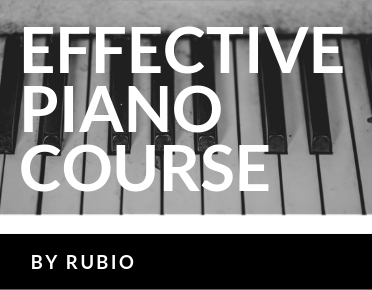A lot of people spend years on end trying to get good at the piano, and fall way short of their goals. They tend to think that they just “don’t have it”. But the vast majority of people who fail at learning piano fail due to bad methods of learning.
Here’s a quick list of strategic mistakes that you should avoid if you want to get good at the piano:
Spending Lots of Time on One Piece
This is first, because it’s the most common major mistake people make!
Especially if you are new to the piano, your priorities should be:
1) getting a great and solid technique 2) learning to play in strict rhythm 3) learning repertoire. And when I say repertoire, I mean learn simple songs, and learn hundreds, if not a thousand or more of them.
Spending lots of time on one song you are not ready for is like going to the gym and using weights that you aren’t ready for. It’s a pure ego move and it does less than nothing for your progress.
If a song takes more than a few days to learn, it’s too soon for you to learn it. Once your technique is up to a certain standard, you should be learning on average a song a day, minimum. And in this case, the perfect is definitely the enemy of the good!
It may interest you
Why Every Musician Needs to Learn 1000 Songs
Doing Useless Five Finger Exercises
I’m speaking specifically of Hanon, which is the #1 time-waster of an exercise. In general, there are lots of exercises out there that don’t do anything.
If you’re doing technique exercises, they should always be exercises with a specific goal. They should should be challenging, unless you are using them as a warm-up. Hanon and other similar exercises are way too easy and boring. You can do them all day and that’s why they don’t do anything for you.
A proper technique routine shouldn’t take more than a half-hour a day. It should be intense and include exercises that build strength, independence and dexterity. And all good technique routines should include lots of work with chords, which brings us to…..
Not Practicing Enough Chords
Many technique routines come from what is vulgarly called the “classical” side of things. This really means music from a couple hundred years ago or more. The problem is that today, or even decades ago, the music has changed in a big way from a technical perspective. What that means is that people today play a lot more chords. They especially play a lot more solid chords (all the notes of the chord sound at exactly the same time).
The problem is that people are still doing exercises like those of Czerny, for example. Those exercises are from that period in history. This means that people are forgetting or ignoring how important chords have become.
There are many ways to practice chords. My favorite is to pick any chord and move it chromatically up and down the keyboard. Another good option is to practice specific chord progressions. The important thing is that to do this every time you practice. It should take priority even over scales.
Skipping Days
This is another biggie. The importance of consistency, especially when just starting out, can’t be emphasized enough.
It’s OK to take one day off per week to recharge the batteries, but the other six days should be absolutely sacred.
Even if you get everything else up to this point wrong, but practise consistently, you are guaranteed to see some sort of progress. Of course, the better the methods, the faster you will be able to progress.
Not Breaking Up your Practice Time
I saved this one for last because this practice hack is invaluable and it’s not very well known.
By far, the most efficient way to practise is to not just do it every day, but to practise three or more times per day! So, for example, say you were going to practise an hour in a given day. Break it up into three 20 minute sets and you will get many times the benefit of the same time spent.


Recent Comments